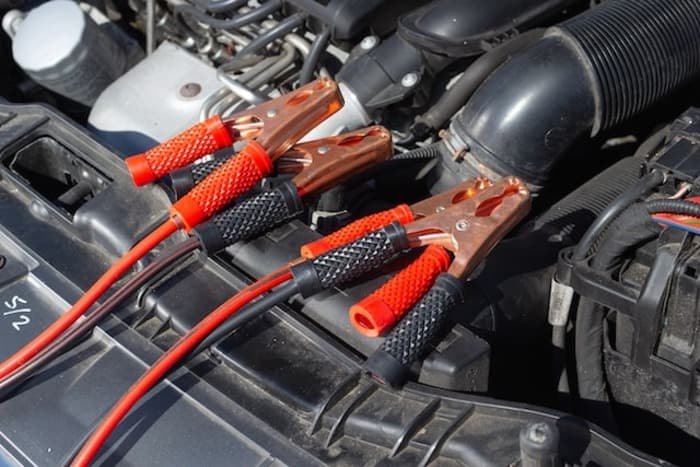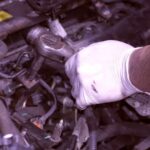Table of Contents
- Introduction
- Why Is My Car Battery Not Holding a Charge?
- Common Causes of Car Batteries Not Holding a Charge
- How to test your battery with a multimeter and cables
- How to Diagnose a Car Battery That’s Not Holding a Charge
- How to Fix a Car Battery That’s Not Holding a Charge
- Diagnosing the Alternator
- Conclusion: Troubleshoot Regularly
Home » Why Is My Car Battery Not Holding a Charge?
Introduction
Having trouble with your car battery not holding a charge? You’re not alone. Many drivers find themselves stuck on the road when their car battery loses its power. There are several potential causes for this issue, and understanding why it is happening can help you know how to address it properly.
There are many reasons your car battery may fail to hold a charge, from overcharging or undercharging to corrosion buildup and old age. These issues can lead to dead batteries and potentially costly repairs if left unresolved. Knowing the cause of the problem will help you determine if you need a new battery or if fixing the existing one is feasible.

If your car isn’t starting correctly, it is important to address the issue right away before further damage is done to your vehicle’s electrical system.
Why Is My Car Battery Not Holding a Charge?
If you’ve been having trouble starting your car lately, or if you notice that the battery dies quickly even when it is in use, it’s possible that your car battery is not holding a charge. This can be a frustrating and inconvenient problem, but the good news is that it’s often easy to diagnose and fix so check out the main causes and fixes for these issues.
And, if you haven’t started getting engine error codes, you might be in for a surprise. Many times battery voltage issues can cause a bunch of engine error codes to start popping up like a lit up Christmas tree.
Common Causes of Car Batteries Not Holding a Charge
Several common reasons a car battery might not hold a charge. Some of the most frequent causes include:
- Age and wear: Car batteries can wear out over time and become less effective at holding a charge. This is especially true if the battery is frequently drained and recharged (such as in a car with many electrical accessories), or if the battery is subjected to extreme temperatures.
- Corrosion: The terminals of a car battery can become corroded, which can interfere with the flow of electricity and cause the battery to drain more quickly. Corrosion can be caused by exposure to the elements or from acid leakage from the battery itself.
- Loose or damaged cables: If the cables that connect the battery to the rest of the car’s electrical system are loose or damaged, it can prevent the battery from charging properly.
- Electrical system issues: In some cases, problems with the car’s alternator or other electrical components can cause the battery to drain more quickly than it should.
How to test your battery with a multimeter and cables
Testing the battery is important in diagnosing why a car battery might not be holding a charge. A multimeter and cables are necessary to test the power supply and ensure there is no electronic system fault.
A multimeter is an instrument used to measure voltage, current, and resistance in an electrical circuit. It helps to measure the amount of electricity running through a car’s battery, allowing mechanics to identify any potential safety issues or faults with the power supply.Make sure not to cross the wires
Cables are also essential for connecting the multimeter to both ends of the car battery’s terminals. Once connected, mechanics can test whether or not enough current is running through from one terminal to another and check for any faulty connections between them.
How to Diagnose a Car Battery That’s Not Holding a Charge
If you suspect that your car battery is not holding a charge, there are a few steps you can take to diagnose the problem. Here are some things to try:
- Check the battery’s age and condition: It may be time to replace it if it is more than three or four years old. Additionally, if the battery appears damaged (such as if the casing is cracked or the terminals are corroded), it may need to be replaced.
- Check the cables: Make sure that the cables that connect the battery to the rest of the car’s electrical system are tightened and free of damage.
- Check the alternator: If the alternator is not functioning properly, it can cause the battery to drain more quickly than it should.
- Check for other electrical issues: If none of the above steps solve the problem, it’s possible that there may be an issue with another part of the car’s electrical system. In this case, it may be necessary to bring the car to a mechanic for further diagnosis.
How to Fix a Car Battery That’s Not Holding a Charge
Once you’ve determined the cause of the problem, there are a few steps you can take to try to fix a car battery that’s not holding a charge:
- Replace the battery: If the battery is old or damaged, the most straightforward solution may be simply to replace it with a new one.
- Clean the terminals: If the terminals are corroded, you can try cleaning them with a mixture of baking soda and water. Be sure to wear gloves and protective eyewear, as the mixture can be corrosive.
- Repair or replace damaged cables: If the cables are damaged or loose, you may need to have them repaired or replaced by a mechanic.
Now, the one thing that we briefly spoke about was the alternator… which leads us to…
Diagnosing the Alternator
If your car battery is not charged, it could be an alternator problem. The alternator is responsible for charging the battery while the car is running and supplying power to the electrical components of your vehicle. When diagnosing why your battery isn’t functioning properly, it’s important to look at the alternator.
To diagnose an alternator issue, you should check the voltage across its terminals with a voltmeter or test light. If this reading comes out low—closer to 12 volts than 14 volts—your alternator needs maintenance or replacement. Additionally, you may want to look for corrosion on any of its wires and connections and listen for grinding or whirring sounds that may suggest worn bearings in need of repair.
Conclusion: Troubleshoot Regularly
Regular maintenance and troubleshooting of your car battery is key to ensure it runs effectively. If your car battery isn’t charged, it could be faulty parts, corrosion, or even human error. To avoid these issues and keep your car running, auto experts suggest regularly checking for signs of trouble and taking action when needed.
Troubleshooting a car battery can be done in simple steps that don’t require special equipment or skills. First, check if the terminals are clean and free from deposits or corrosion. Look at the overall condition of the cables; they should be securely connected with no fraying or cracks visible on them. Finally, examine each cell’s fluid levels to ensure they are filled correctly so your batter can run efficiently.


